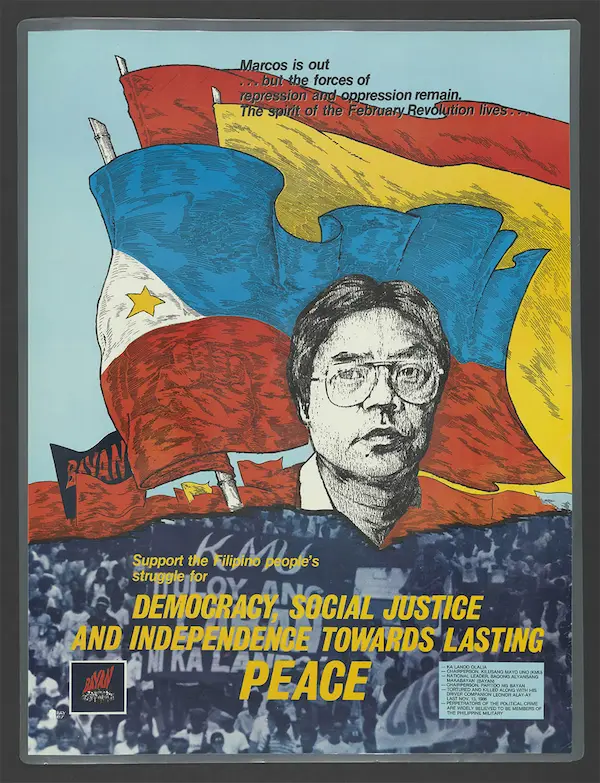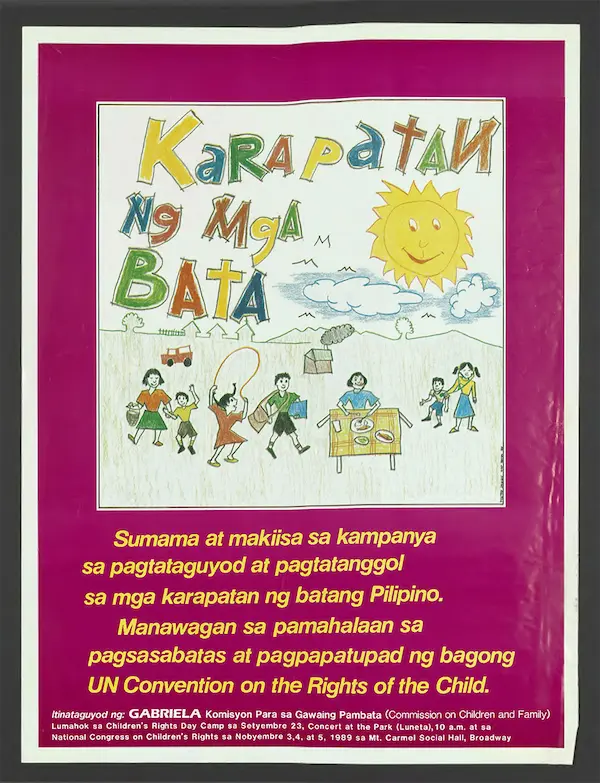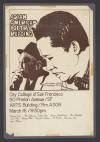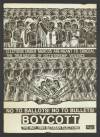Never Forget
Filipinx Americans and the Philippines Anti-Martial Law Movement
PLEASE CLICK ON POSTERS BELOW FOR MORE INFORMATION
On February 25, 1986, with U.S. military assistance, Ferdinand Marcos and his family fled the presidential palace in Malacañang for Andersen Air Force Base in Guam and then to Hickam Air Force Base in Hawai’i, where he remained until his death in 1989. For four days that February, a mass movement in the Philippines toppled the dictator. While People Power, as it would come to be known, took shape as a unified gathering along Epifanio de los Santos Avenue (EDSA), it was comprised of an array of different groups and organizations both in the Philippines and outside of the country, many of which began their work well before and would continue it well after the dictator’s ousting. [more]
The oral histories featured in this exhibit represent a snapshot of the anti-martial law movement. The documentation of martial law and its opposition movement, through interviews, oral histories, and testimonies, has been a crucial part of the preservation of anti-martial law history in the Philippines and the diaspora. With the return of the Marcoses to political power, remembering and teaching this history are political acts in the face of historical revisionism and disinformation. There are four activists featured on this page: Xenia Tupas, Cathy Miraballes, Carol Ojeda-Kimbrough, and Enrique de la Cruz. Their activism spans decades and shows a lifelong commitment to social justice. Whether going through the clips or the whole interview, their stories ground listeners in a grassroots history of martial law, and they remind us to “never forget.” [more]
ESSAY
On February 25, 1986, with U.S. military assistance, Ferdinand Marcos and his family fled the presidential palace in Malacañang for Andersen Air Force Base in Guam and then to Hickam Air Force Base in Hawai’i, where he remained until his death in 1989. For four days that February, a mass movement in the Philippines toppled the dictator. While People Power, as it would come to be known, took shape as a unified gathering along Epifanio de los Santos Avenue (EDSA), it was comprised of an array of different groups and organizations both in the Philippines and outside of the country, many of which began their work well before and would continue it well after the dictator’s ousting. [more]
ORAL HISTORIES
The oral histories featured in this exhibit represent a snapshot of the anti-martial law movement. The documentation of martial law and its opposition movement, through interviews, oral histories, and testimonies, has been a crucial part of the preservation of anti-martial law history in the Philippines and the diaspora. With the return of the Marcoses to political power, remembering and teaching this history are political acts in the face of historical revisionism and disinformation. There are four activists featured on this page: Xenia Tupas, Cathy Miraballes, Carol Ojeda-Kimbrough, and Enrique de la Cruz. Their activism spans decades and shows a lifelong commitment to social justice. Whether going through the clips or the whole interview, their stories ground listeners in a grassroots history of martial law, and they remind us to “never forget.” [more]
















































































